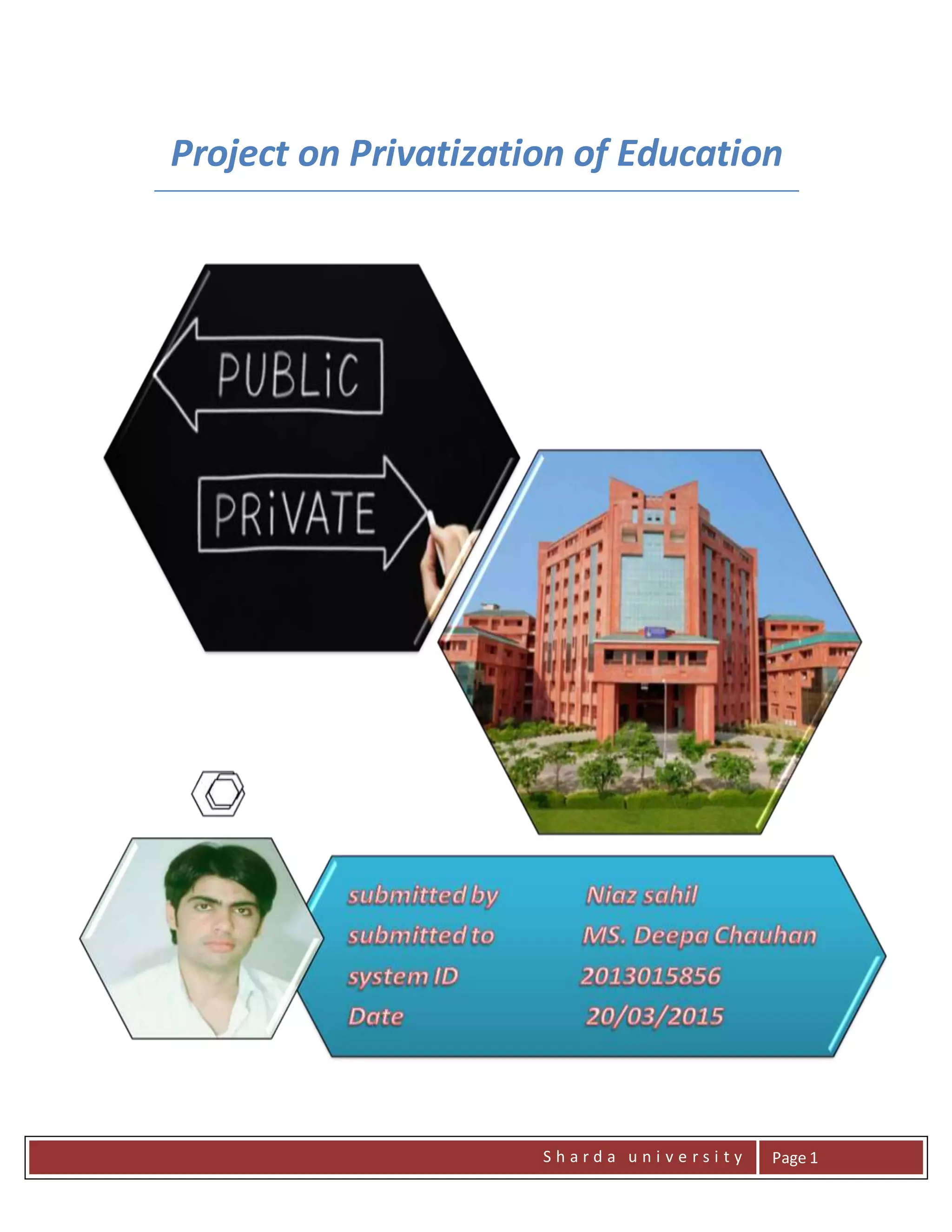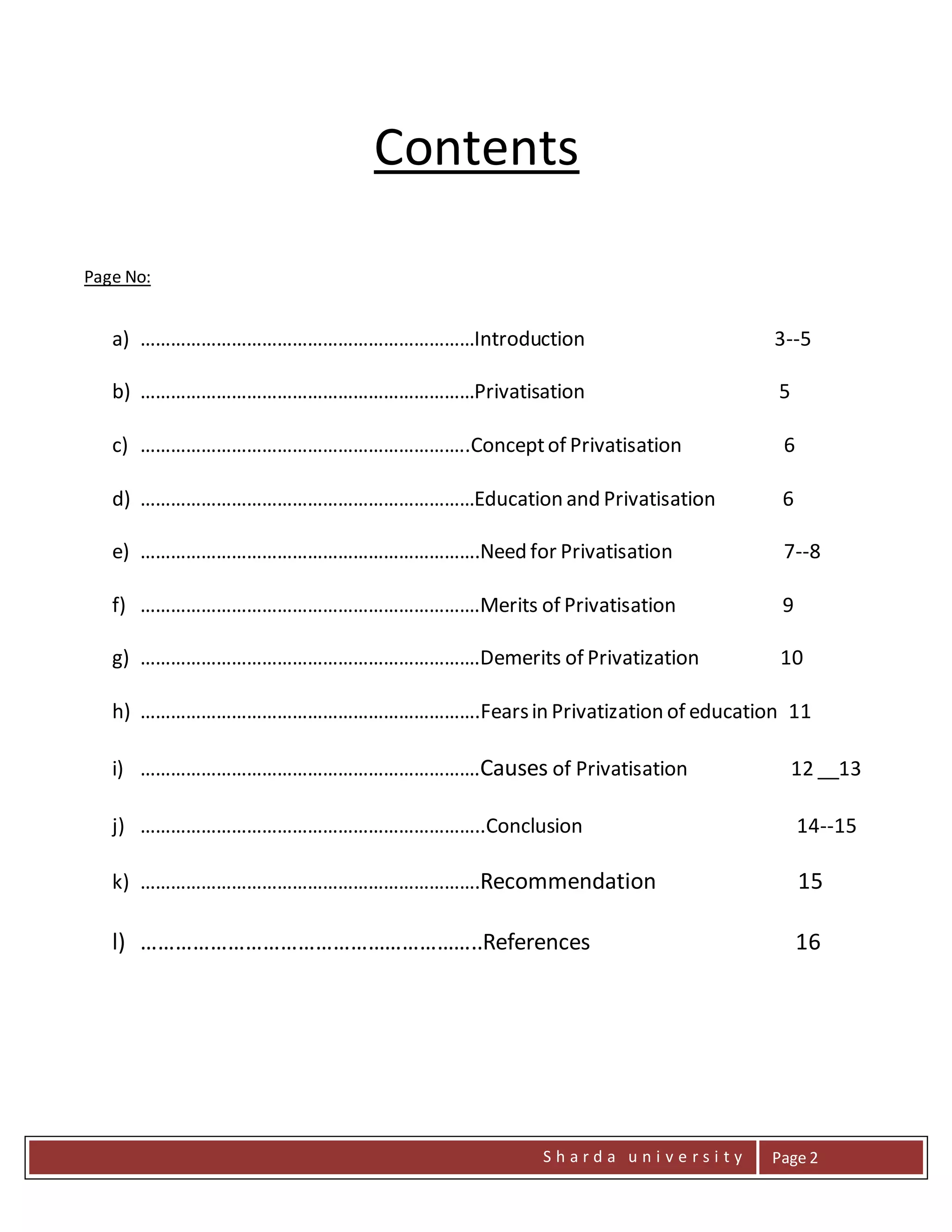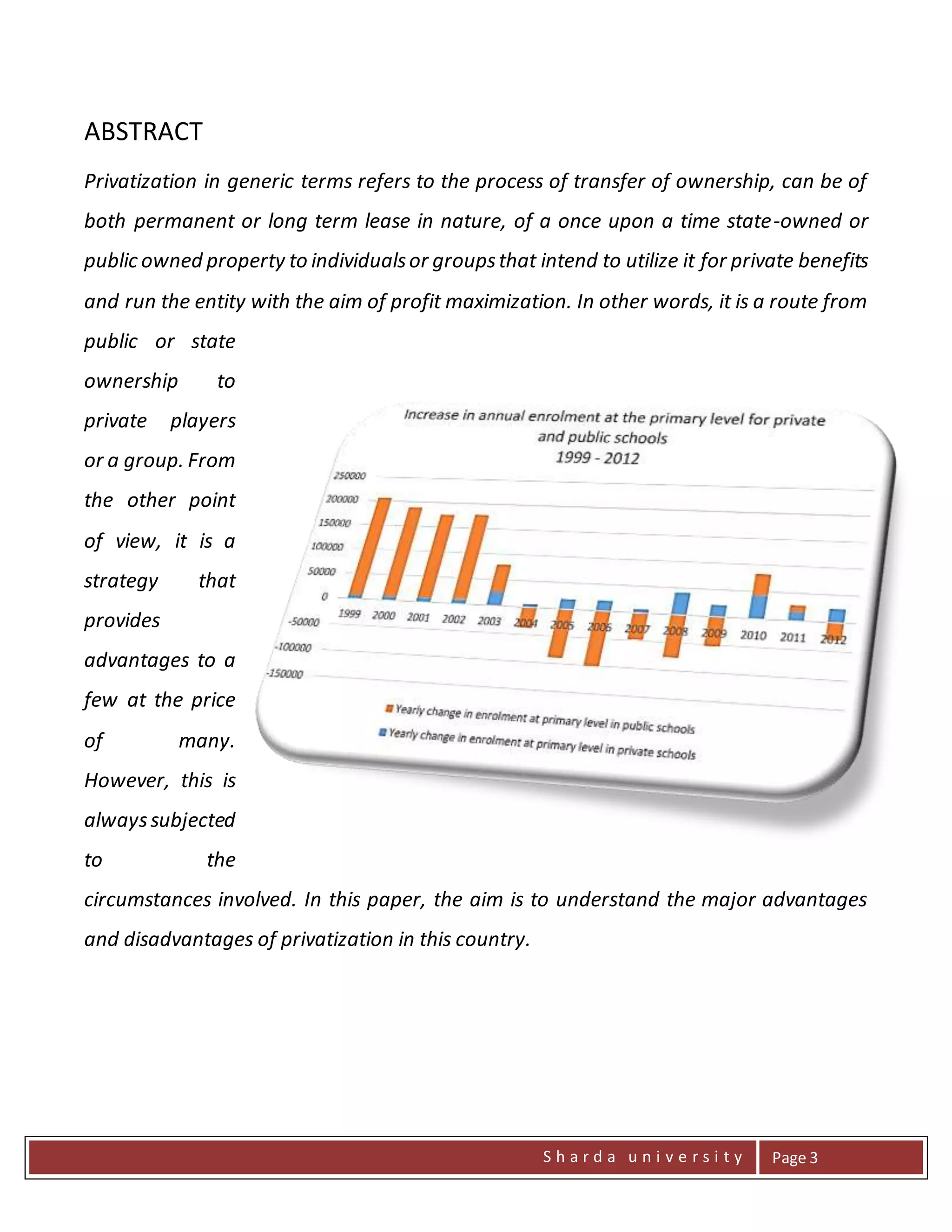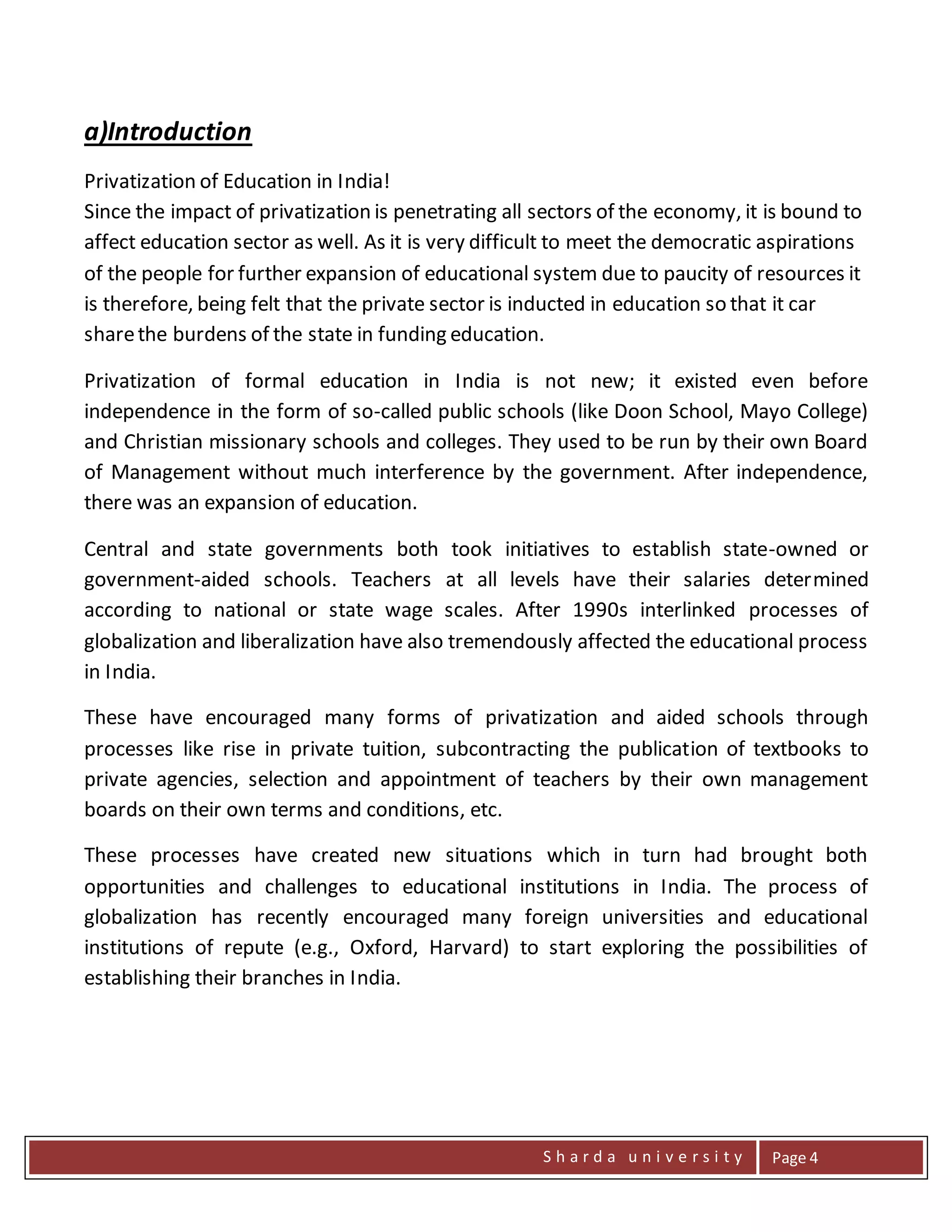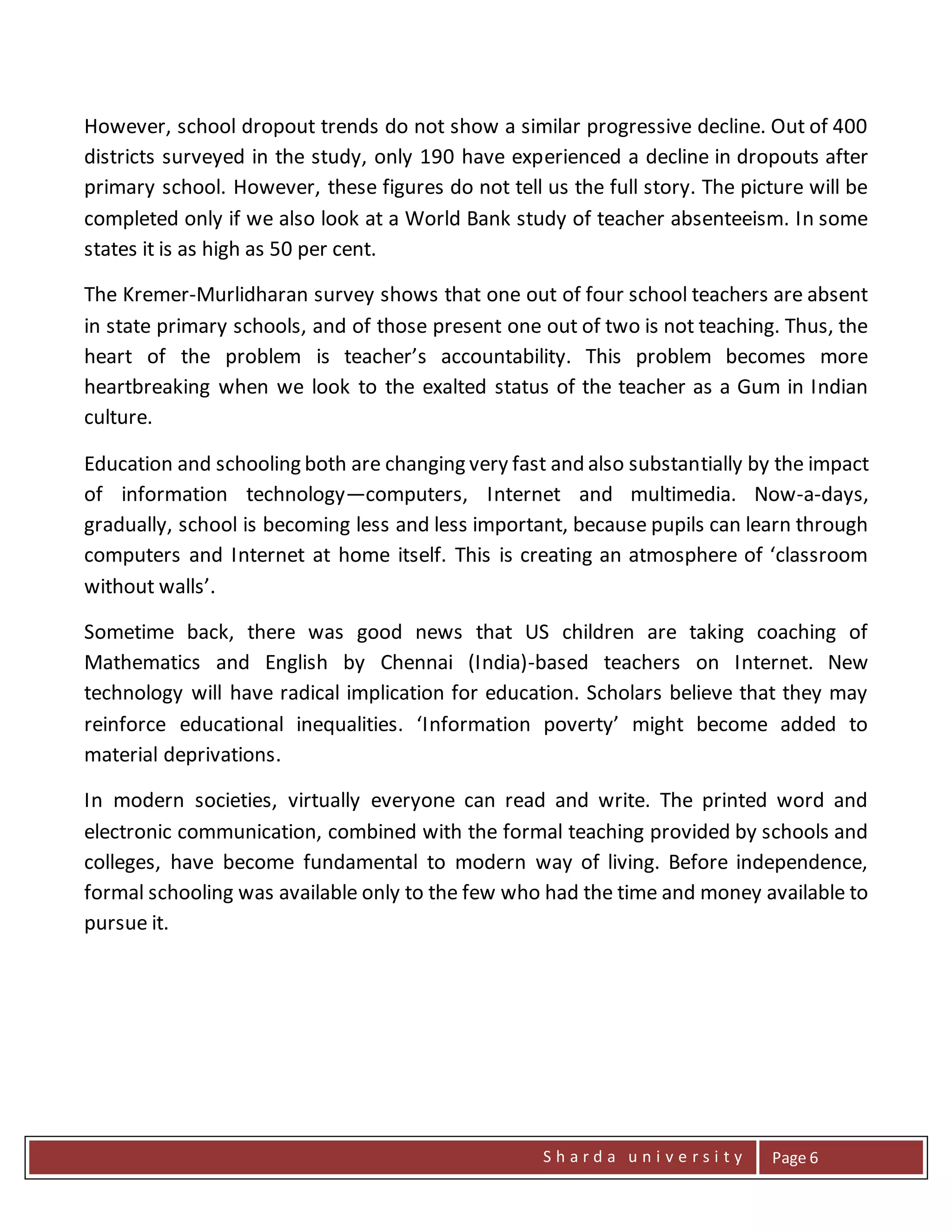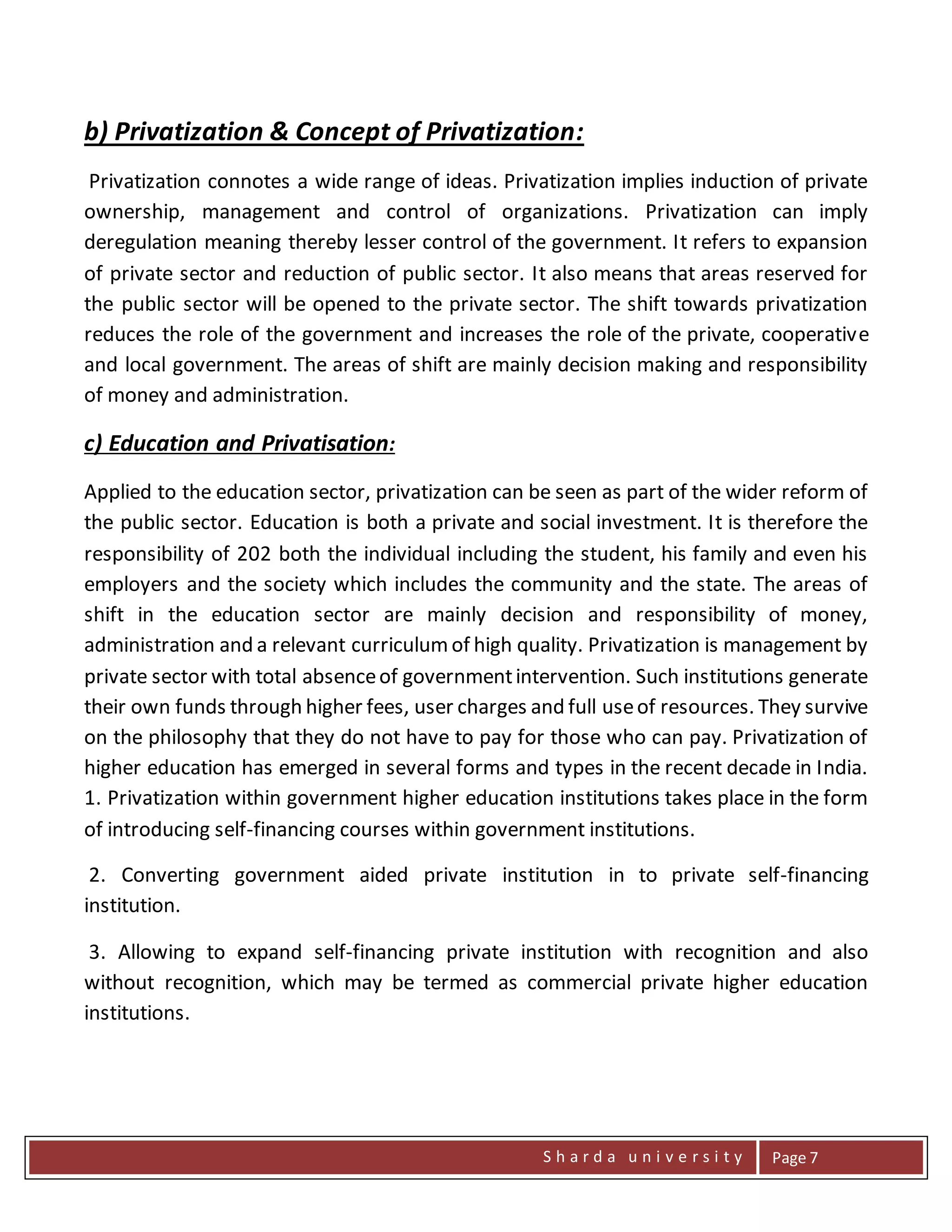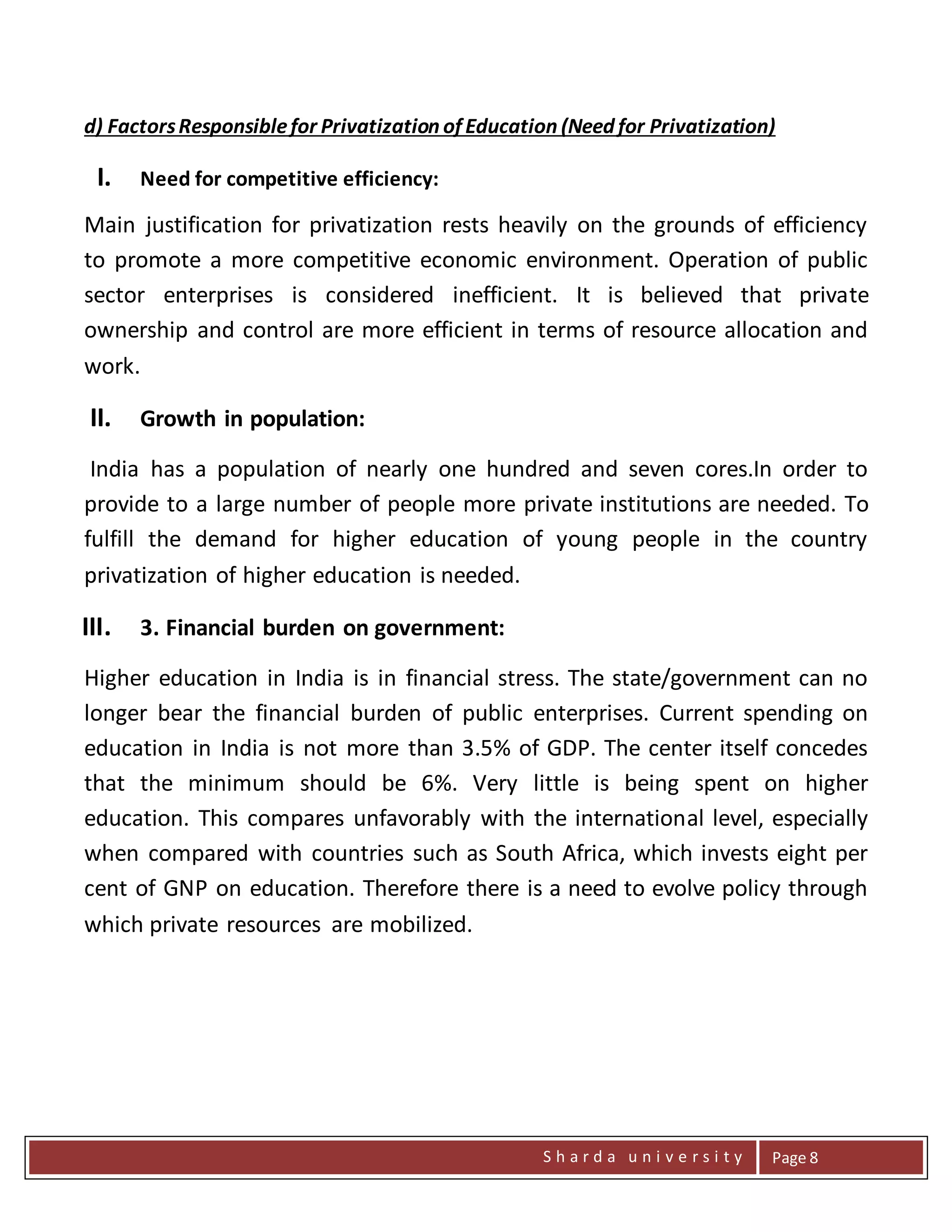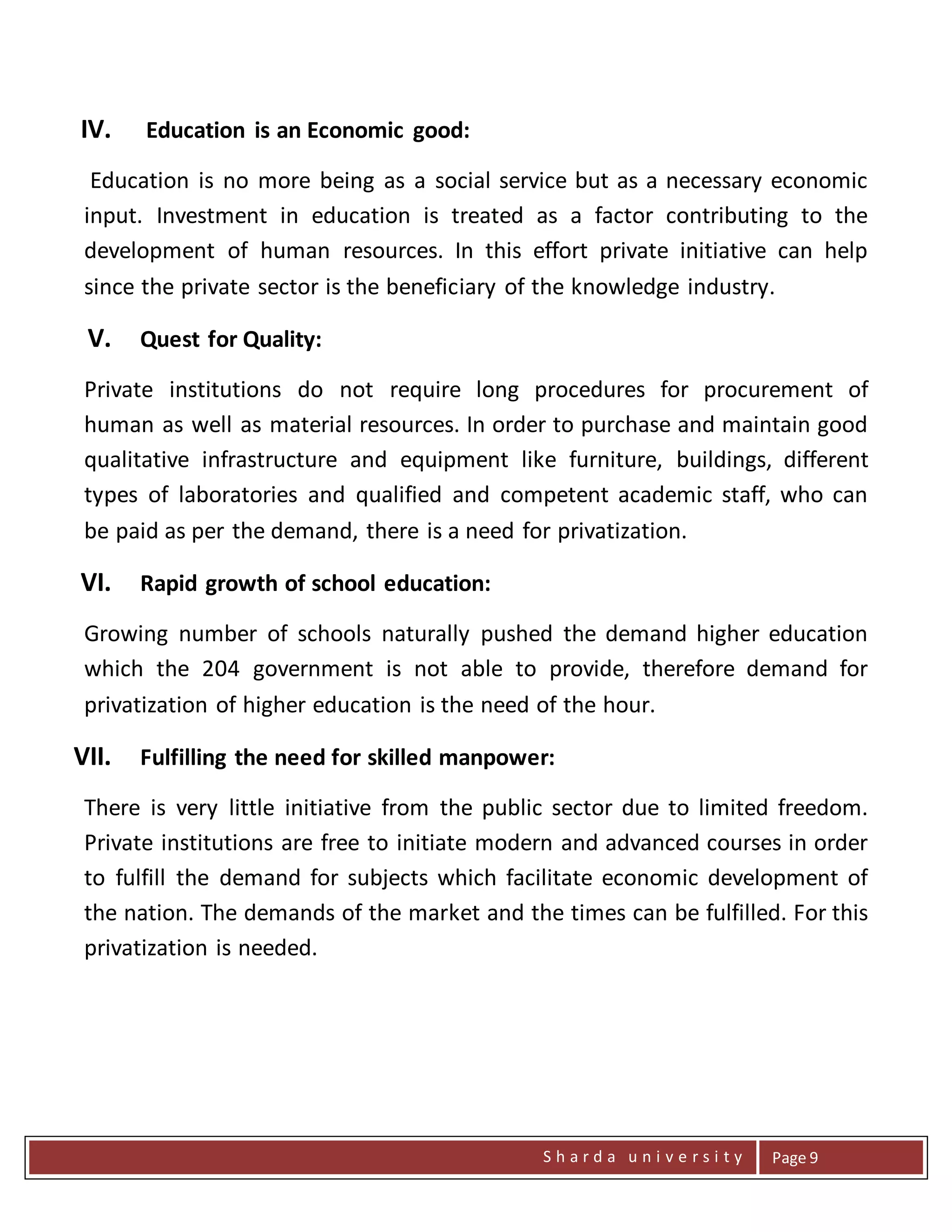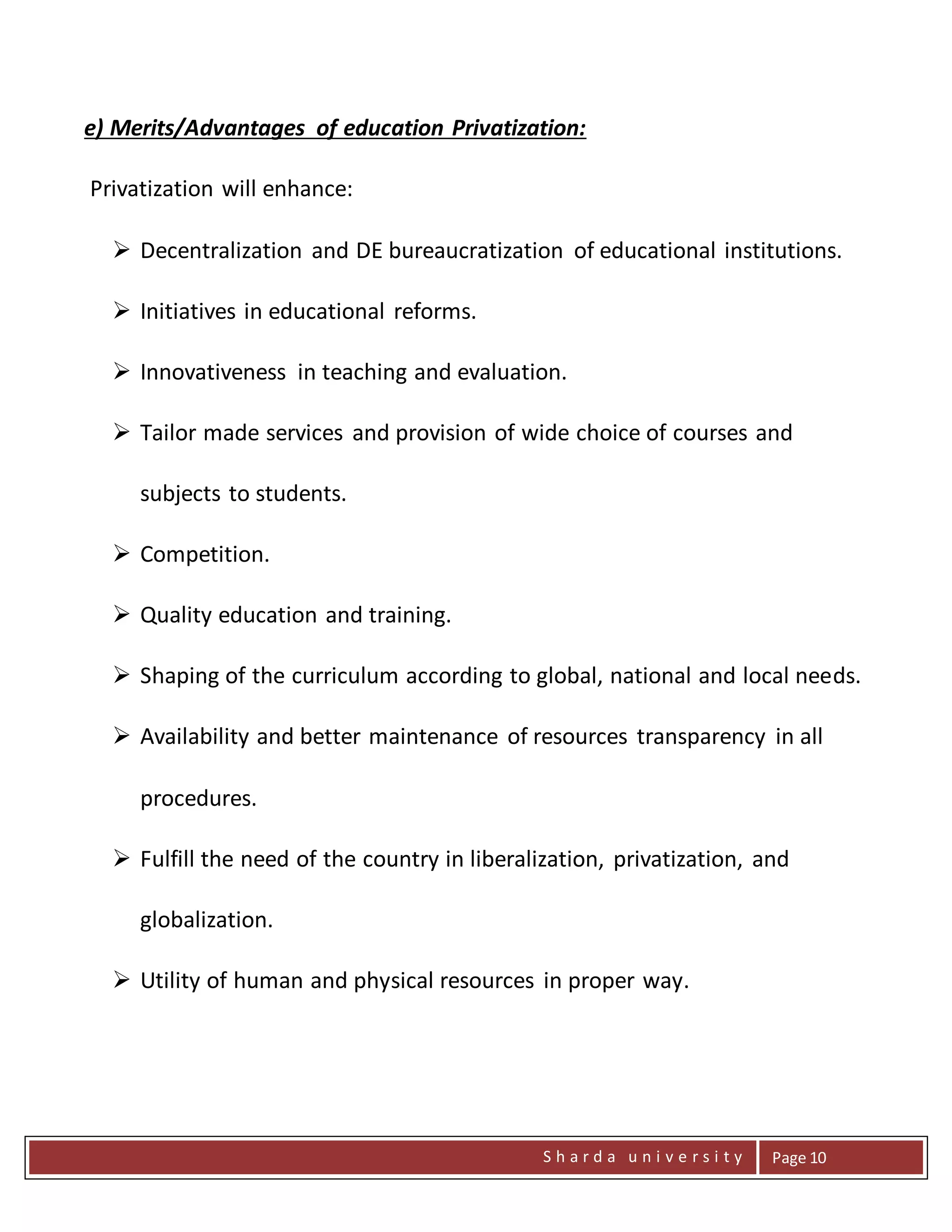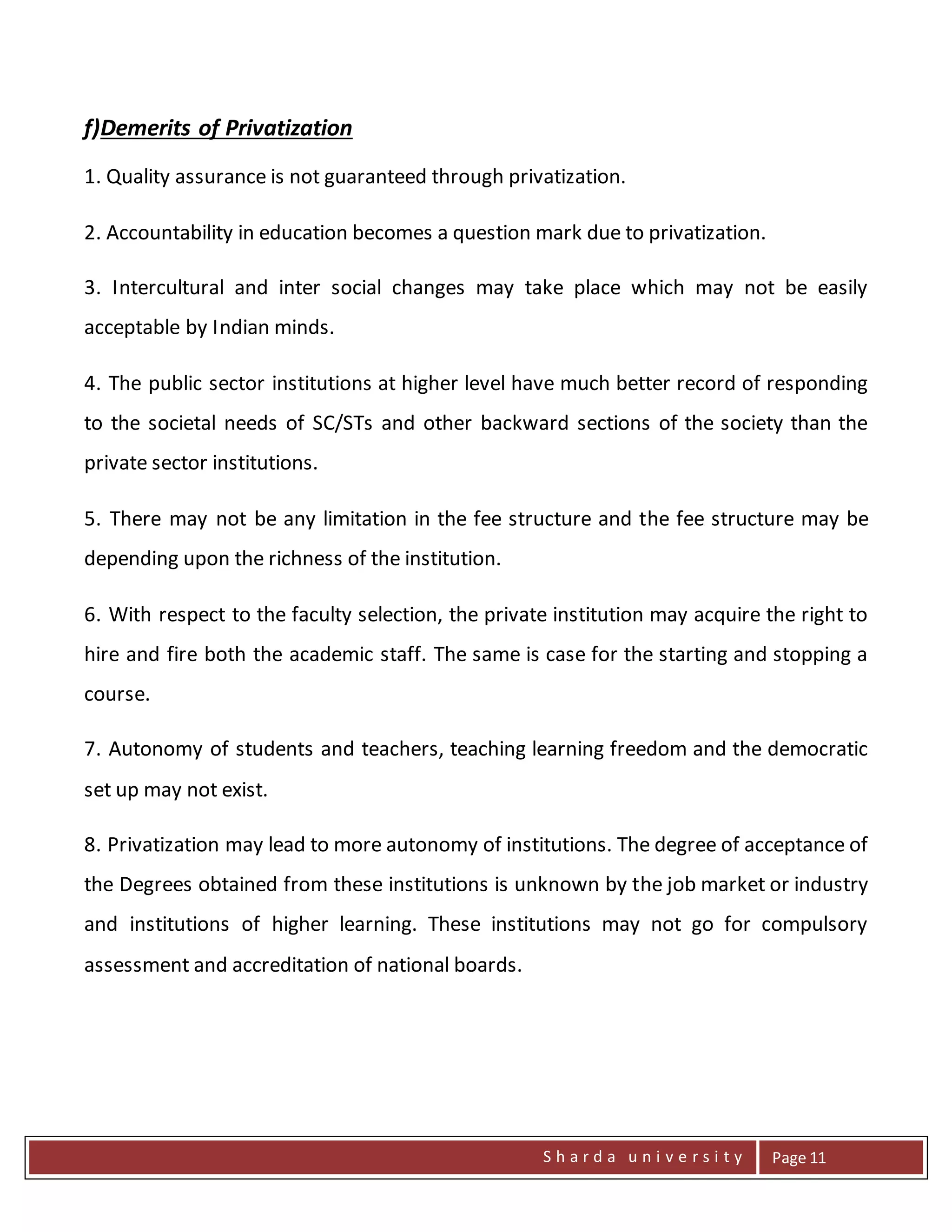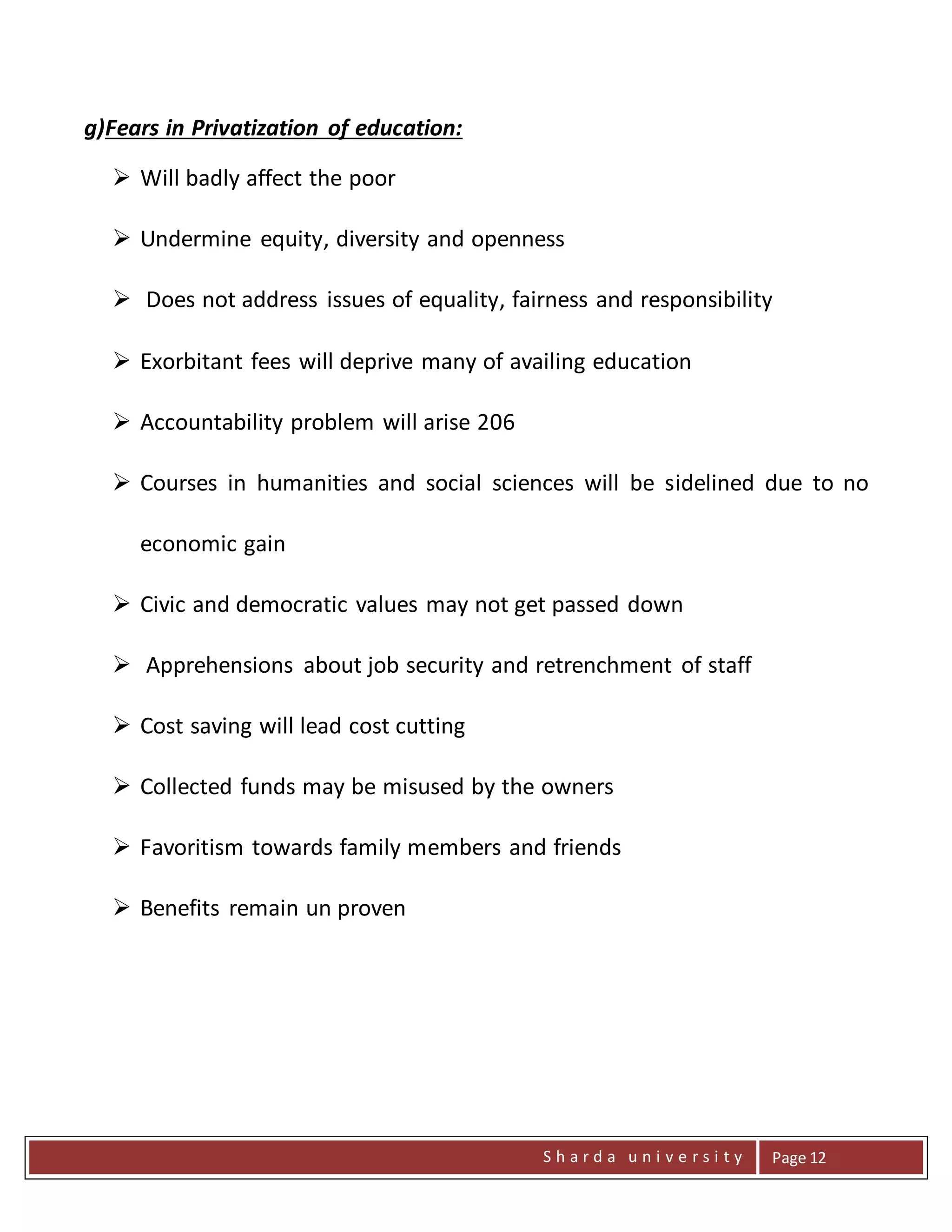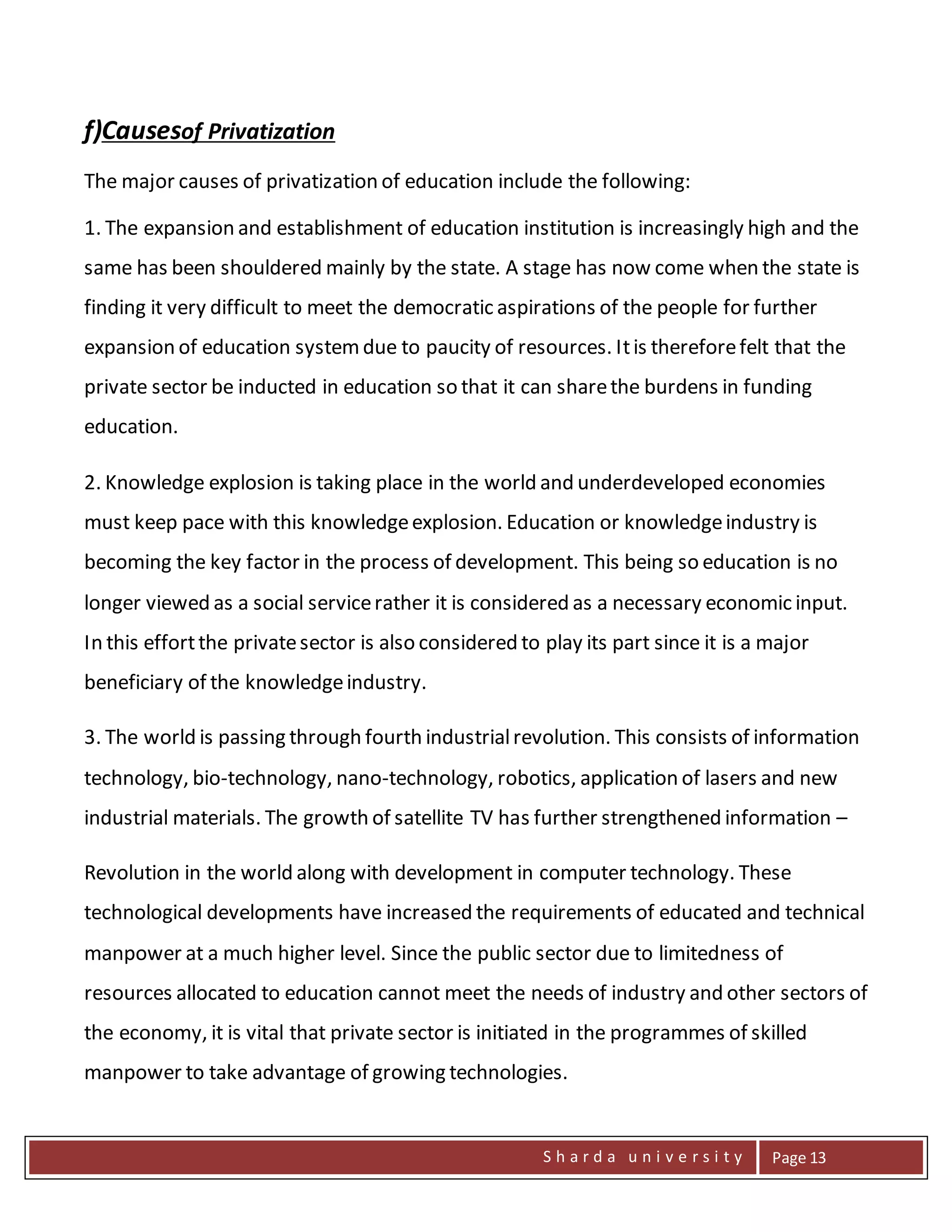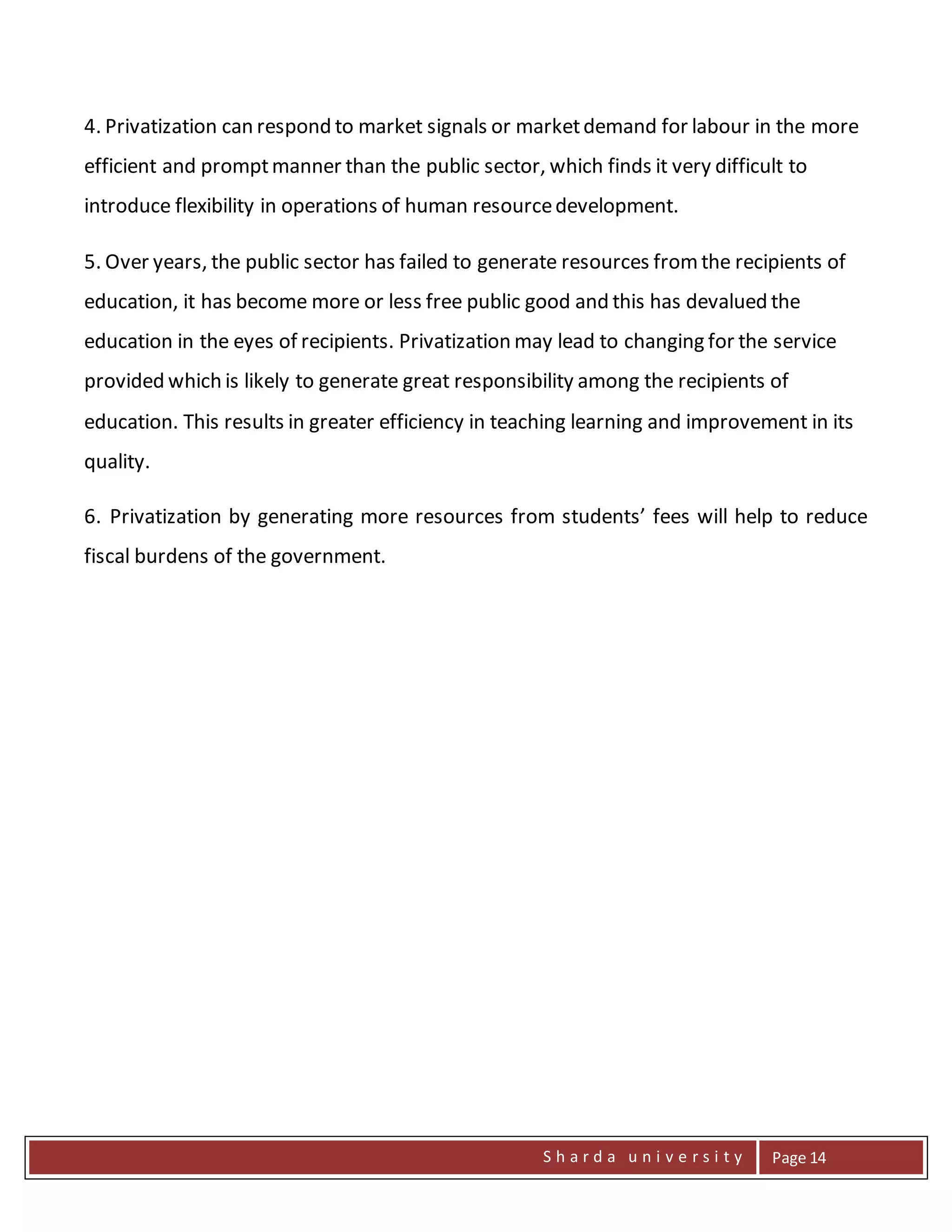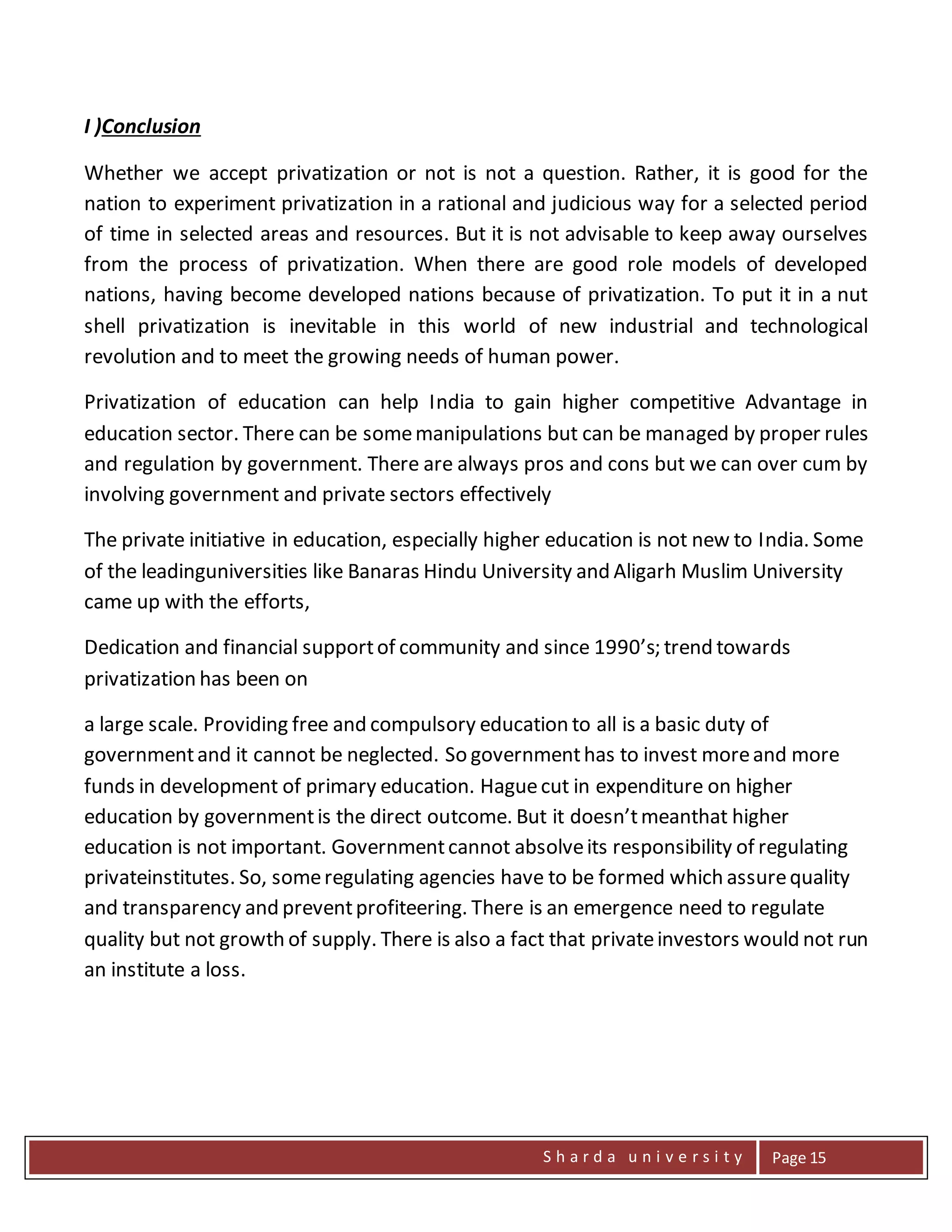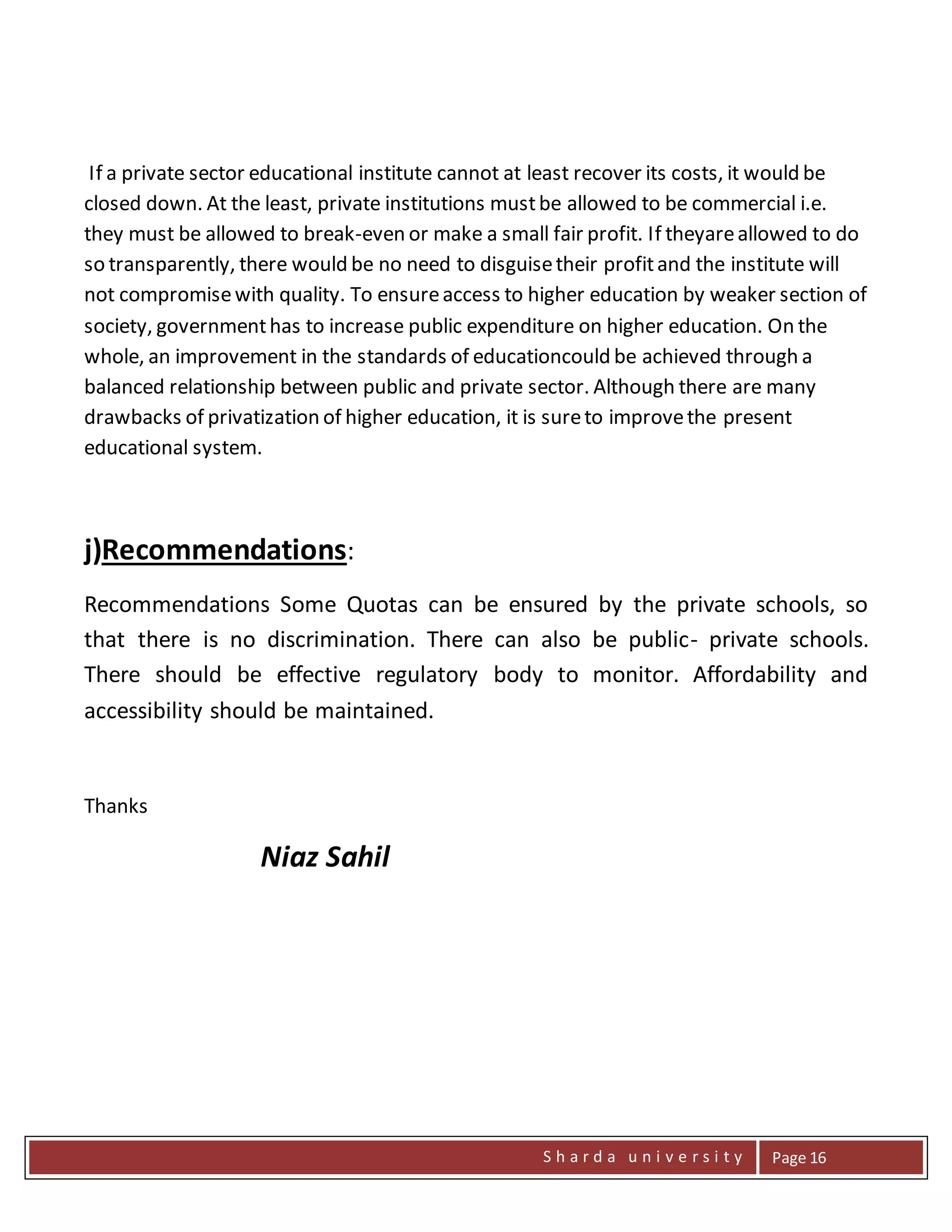This document discusses the privatization of education in India. It notes that privatization has increased in the education sector through various means like the rise of private tuition and contracting private agencies to publish textbooks. The quality of education in government schools has declined due to lack of infrastructure and accountability issues with teachers. There is a growing need for privatization in education to address issues like the growing population, financial burden on the government, and demand for higher education that the public sector cannot meet alone. However, privatization also raises concerns about furthering educational inequalities.
